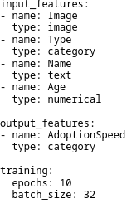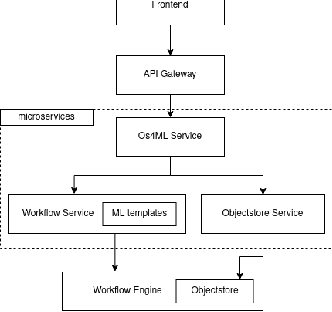Bernhard Bauer
Towards Democratizing AI: A Comparative Analysis of AI as a Service Platforms and the Open Space for Machine Learning Approach
Nov 08, 2023


Abstract:Recent AI research has significantly reduced the barriers to apply AI, but the process of setting up the necessary tools and frameworks can still be a challenge. While AI-as-a-Service platforms have emerged to simplify the training and deployment of AI models, they still fall short of achieving true democratization of AI. In this paper, we aim to address this gap by comparing several popular AI-as-a-Service platforms and identifying the key requirements for a platform that can achieve true democratization of AI. Our analysis highlights the need for self-hosting options, high scalability, and openness. To address these requirements, we propose our approach: the "Open Space for Machine Learning" platform. Our platform is built on cutting-edge technologies such as Kubernetes, Kubeflow Pipelines, and Ludwig, enabling us to overcome the challenges of democratizing AI. We argue that our approach is more comprehensive and effective in meeting the requirements of democratizing AI than existing AI-as-a-Service platforms.
Towards Automated COVID-19 Presence and Severity Classification
May 15, 2023Abstract:COVID-19 presence classification and severity prediction via (3D) thorax computed tomography scans have become important tasks in recent times. Especially for capacity planning of intensive care units, predicting the future severity of a COVID-19 patient is crucial. The presented approach follows state-of-theart techniques to aid medical professionals in these situations. It comprises an ensemble learning strategy via 5-fold cross-validation that includes transfer learning and combines pre-trained 3D-versions of ResNet34 and DenseNet121 for COVID19 classification and severity prediction respectively. Further, domain-specific preprocessing was applied to optimize model performance. In addition, medical information like the infection-lung-ratio, patient age, and sex were included. The presented model achieves an AUC of 79.0% to predict COVID-19 severity, and 83.7% AUC to classify the presence of an infection, which is comparable with other currently popular methods. This approach is implemented using the AUCMEDI framework and relies on well-known network architectures to ensure robustness and reproducibility.
 Add to Chrome
Add to Chrome Add to Firefox
Add to Firefox Add to Edge
Add to Edge